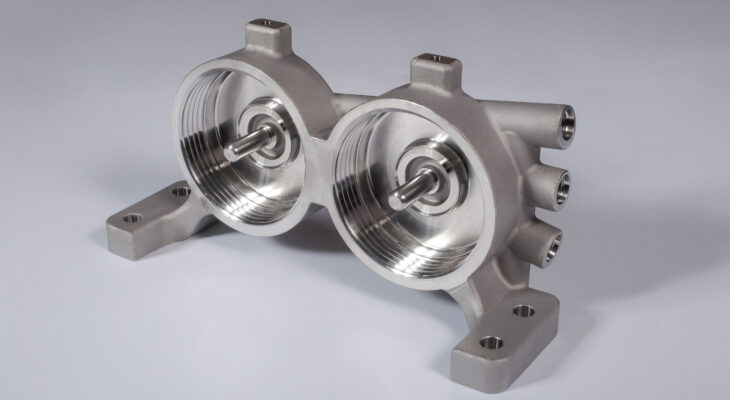Introduction: Stainless steel casting is a remarkable manufacturing process that combines the durability and corrosion resistance of stainless steel with the precision and complexity of intricate designs. This technique has found its way into a wide range of industries, from aerospace to medical, automotive to food production. In this article, we will delve into the world of stainless casting, exploring its benefits, applications, and the fascinating process behind it.
The Art of Stainless Steel Casting
Stainless steel casting, also known as steel investment casting, is a metalworking process that involves creating intricate components and parts using steel. It is a precise and flexible method that allows manufacturers to produce complex shapes, thin walls, and fine details with high accuracy. The process begins with the creation of a wax or plastic pattern of the desired part, which is then coated with a ceramic shell. Once the shell is hardened, the wax or plastic is melted or burned out, leaving a cavity that is later filled with molten stainless steel. After cooling and solidifying, the ceramic shell is removed to reveal the stainless steel component, ready for finishing and further processing.
The Benefits of Stainless Steel Casting
- Corrosion Resistance: One of the most significant advantages of stainless steel casting is the inherent corrosion resistance of stainless steel. This property makes it an ideal choice for applications in environments where exposure to moisture, chemicals, and other corrosive substances is common. Stainless steel components maintain their integrity and longevity even in harsh conditions.
- Complex Geometry: Stainless steel casting allows for the creation of intricate and highly detailed parts. This versatility is especially valuable in industries such as aerospace and automotive. Where complex shapes and fine tolerances are often require for optimal performance.
- Cost-Effective: While the initial tooling and setup costs for stainless casting can be relatively high. The method often proves cost-effective in large-scale production. The process minimizes material waste, and the durability of stainless steel parts reduces the need for frequent replacements.
- Strength and Durability: Stainless steel is know for its exceptional strength, which is maintain in cast components. This strength makes stainless casting ideal for applications where structural integrity is paramount.
Applications of Stainless Steel Casting
Stainless steel casting has a wide array of applications across various industries:
- Aerospace: The aerospace industry relies heavily on steel for components such as turbine blades, engine parts, and structural components. The combination of strength, precision, and corrosion resistance is crucial for the safety and efficiency of aircraft.
- Medical: Stainless steel castings are use in medical instruments and equipment due to their biocompatibility. Resistance to sterilization processes, and precision manufacturing.
- Automotive: In the automotive sector, stainless are employe in engine components, exhaust systems, and various other critical parts. Their durability and corrosion resistance contribute to the long-term performance of vehicles.
- Food Production: Stainless steel castings are essential for food processing equipment and machinery. The material’s hygienic properties and resistance to corrosion make it a safe and durable choice for the food industry.
- Marine: The marine industry relies on stainless steel for ship and boat components. Their resistance to saltwater corrosion ensures the longevity of marine equipment.
Conclusion
Stainless Steel casting stands as a testament to human ingenuity, combining the timeless strength. And corrosion resistance of steel with the precision and complexity of modern manufacturing techniques. The process’s versatility and reliability have made it a cornerstone of multiple industries, ensuring the production of high-quality, long-lasting components. As technology and materials continue to evolve. Stainless will undoubtedly play a crucial role in shaping the future of engineering and design.

